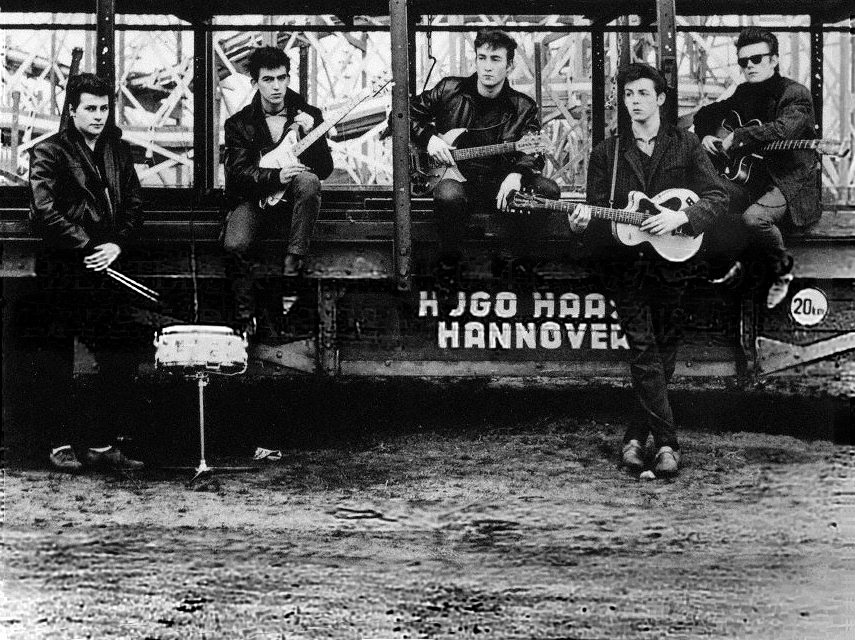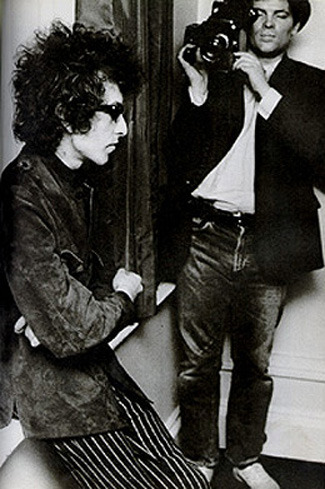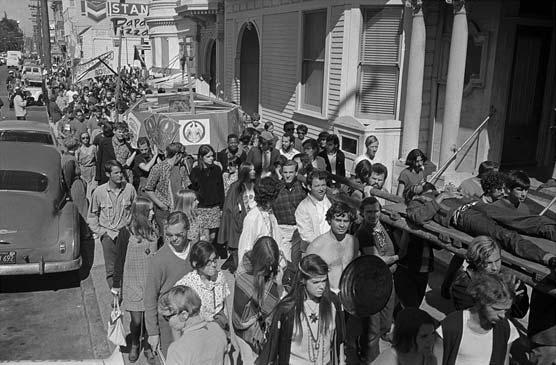Monday, November 21, 2011
Rock and Roll, Part 2
I) The Rebirth of Rock – the years between 1958 (when Elvis went into the army) and 1963 (when the Beatles broke in the United States) have been portrayed as the low point of rock history, but in reality it was the time when black do-wop groups ruled—except for the white teen idols (Fabian, Frankie Avalon—who appealed to the American Bandstand crowd)
A) Beatles – undoubtedly, the most influential group of musicians in the years after 1950. How many band members in the 1960s and 1970s recounted their first exposure to the Beatles as the beginning of their career in music?
1) Liverpool – in the 1950s, Liverpool was a depressed seaport, with piles of rubble left over from the destruction of WWII, but it supported a huge music scene.
(a) Skiffle – an English interpretation of American folk music (songs like Rock Island Line, etc.). Its biggest star, Lonnie Donegan, performed with more enthusiasm than talent—but that was just the point, and this music inspired hundreds of young people to get a guitar and form a band.
(b) Muddy Water – inspired many of the same young people to perform with amplified music
(c) Search for authenticity – appreciation for indigenous cultural artifact from another culture (namely music) a sign of cosmopolitanism—of “hipness.”
2) Brian Epstein – scion of a family that owned a regional chain of department stores; bored, and afraid that a convicted felon due for release soon would “out” him. Epstein knew little about music, but was a promotional genius.
(a) Cleaning up the Beatles image – before Epstein, the Beatles dressed in black and leather. Epstein prevailed on the band to wear suits and neckties—although they kept the “French cuts” (long hair).
(b) Beatles came across as pleasant, intelligent young men, just cheeky enough to appeal to their generation, but not threatening enough that mother would ban them from the house.
(i) This, of course, left the door open for a band to emerge with a more raucous sound and a dirtier image—namely, the Rolling Stones.
(ii) Beatles themselves were loud and raucous, and they brought a new sense of style to rock and roll that the Rolling Stones also followed—a sense of campiness, that all of this was done as kind of an inside joke, which only “insiders” could pick up on.
3) Do It Ourselves – Lennon and McCartney were determined that their band would perform songs mainly written by themselves—a break with past traditions (for instance, although Elvis Presley received song publishing credit, he didn’t really write any songs himself).
II) Bob Dylan
A) Robert Zimmerman – a bright Jewish kid growing up in Hibbing, Minnesota, listening to black r & b on the radio, as well as country music.
1) University of Minnesota – Zimmerman after high school attended school in Minneapolis, where he discovered what passed for the “bohemian” crowd there, and he began developing the Bob Dylan persona.
(a) Re-emergence of the folk music movement – Folk music first emerged in the early 1950s, but was quashed in the Red Scare led by McCarthy; with McCarthy’s fall, folk re-emerges
(i) Woody Guthrie – Guthrie, a member of the Weavers along with Pete Seeger, cannot re-emerge with the movement he helped inspire because he is stricken with Parkinson’s disease. Dylan, by this time, has copied Guthrie’s repertoire (as well as his style of delivery).
2) Move to New York – after his sophomore year, Dylan moved to New York (really the only city one could make a living as a folk musician); Dylan assumes Guthrie’s mantle, and develops his own repertoire of songs, while retaining much of the persona he appropriated from Guthrie.
3) Stardom – Dylan quickly established himself as the biggest fish in a rather small pond (Joan Baez, Peter, Paul, & Mary, Pete Seeger, etc.), which was good enough until the Beatles arrived.
III) Beatlemania
A) UK – the Beatles built a solid following in the United Kingdom, particularly among young girls, who tended to scream during the entire set (which had gotten shorter, at the insistence of Epstein—about twenty-five minutes, on average).
1) Three things set Beatles apart
(a) Furious energy
(b) Care and diligence that Lennon and McCartney brought to developing their own songs
(c) Demand that they be able to create their own “art”
B) “Phony Beatlemania” – the storied “conquering” of the US is much more complicated than is generally known.
1) Screaming crowds – were hired by Brian Epstein, who also massaged members of the press to spin favorable stories about the band.
2) Successful tour – the initial tour in 1963 was successful, but the Beatles did not initially take the country by storm.
3) “Hard Days Night” – a pseudo-documentary of a day in the life of the band, full of them being chased by young women, and being cute and cuddly. Film was released in 1964, and the band toured US after its release—when the Beatlemania was anything but phony (after American kids were shown how they should act).
4) Critical acceptance – perhaps the most important distinction between rock’s rebirth and its initial creation was that it was an acceptable musical form, particularly as it was performed by the Beatles (not that there was not some opposition to the long-haired freaks, but it was much less vehement the second time around).
IV) Dylan Meets the Beatles
A) Dylan Tours UK – Dylan toured the UK in early 1964, where he was treated by audiences like a rock star—like the Beatles. In fact, Dylan was greatly influential upon the Beatles, who admired his songwriting ability. Dylan, for his part, admired the audience the Beatles were attracting.
1) “I Wanna Hold Your Hand” – Beatles hit, which became ubiquitous in the US in 1964, and which Dylan thought contained the lyrics “Your love, I get High! I get high! I get high!” (instead of “can’t hide”). This becomes an issue of greater amusement after Dylan introduced the Beatles to marijuana in August of 1964. Inserted into one of the songs on the subsequent album, Rubber Soul, was the “I get high!” lyric in the song “It’s Only Love.”
B) Dylan goes electric – in an effort to broaden his audience, upon his return from England Dylan recorded his last acoustic album for many years, Another Side of Bob Dylan, which contained only one overtly political song. In May 1965 he released his first electric album, Bringing It All Back Home, which contained “Subterranean Homesick Blues” which, although a modest success in the US, became his second top ten hit in the UK
1) 1965 Newport Folk Festival – although Dylan was not booed off the stage at Newport while performing with members of the Paul Butterfield Blues Band, his reception was less than enthusiastic, and he pulled the plug after performing only two or three songs (perhaps having more to do with his stoned state than the audience)
(a) Dylan and drug use – Dylan, in an effort to “get to the depths of where you are at” (whatever that means), was increasingly relying upon drugs, particularly marijuana, to get there.
2) 1965 Dylan UK tour – his performance style was becoming increasingly hostile (he refused to perform earlier songs), and his reception there was much less ecstatic than before.
V) Haight-Asbury
A) The Acid Test
1) Ken Kesey and the Merry Pranksters—and LSD
Subscribe to:
Post Comments (Atom)











No comments:
Post a Comment